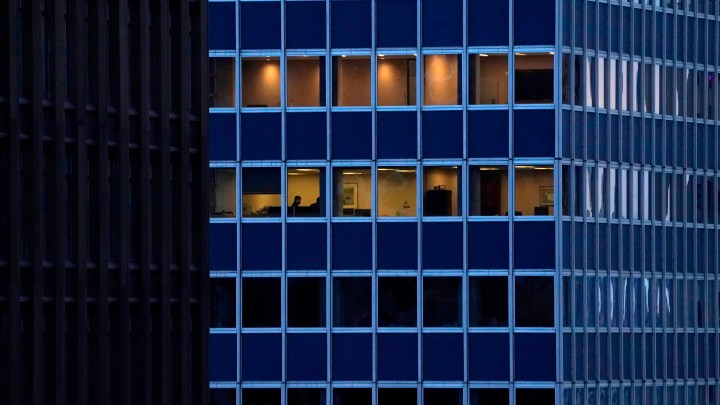
More workers are returning to offices, but downtown? Not so much.
More workers are returning to offices, but downtown? Not so much.

Deep in the October federal jobs report was a nugget about remote work — or “telework,” to use the old term still favored by the government. The share of workers staying home due to worries about COVID dropped after plateauing over the summer. It hit a pandemic low of 11.6%.
Though more workers might be going back to the office, they’re not necessarily going back to downtown business districts.
No, cities aren’t dead, as it seemed early in the pandemic, but those high-rise office towers that create their skylines aren’t too popular these days.
“No doubt about it: Downtowns are taking the brunt of this,” said Ian Anderson at commercial real estate firm CBRE. Especially in the biggest cities.
Office vacancies are up everywhere, but they’ve gone up much faster in downtowns than in the suburbs, where commutes aren’t as painful.
“It’s a little more accessible. It’s lower-density. And it’s just, it’s easier,” Anderson said.
It’s a big turnaround from the years before the pandemic, said Ellen Dunham-Jones at Georgia Tech.
“We saw this big move of big-office folks moving back into the cities. Plus, that’s where the new younger, digital-savvy workers all wanted to live — in cities,” she said.
The pandemic reversed some of the trends toward urbanization. Families are seeking more space in the suburbs. Still, young people are returning to cities like New York and San Francisco, per Robert Sammons with Cushman & Wakefield.
“Those people renting apartments realize they’re going to have to go back into the office at least a few days a week, and they may as well be convenient for them to do so,” Sammons said.
But even if remote work brings fewer office jobs back to central business districts, that doesn’t have to spell disaster, said Richard Florida, author of “The Rise of the Creative Class.”
“You know cities used to have these giant factory complexes and warehouse complexes,” Florida said. “Some of them have been repurposed.”
Perhaps that same process of repurposing could turn today’s ill-used offices into tomorrow’s vibrant arts district, he added.
There’s a lot happening in the world. Through it all, Marketplace is here for you.
You rely on Marketplace to break down the world’s events and tell you how it affects you in a fact-based, approachable way. We rely on your financial support to keep making that possible.
Your donation today powers the independent journalism that you rely on. For just $5/month, you can help sustain Marketplace so we can keep reporting on the things that matter to you.

















